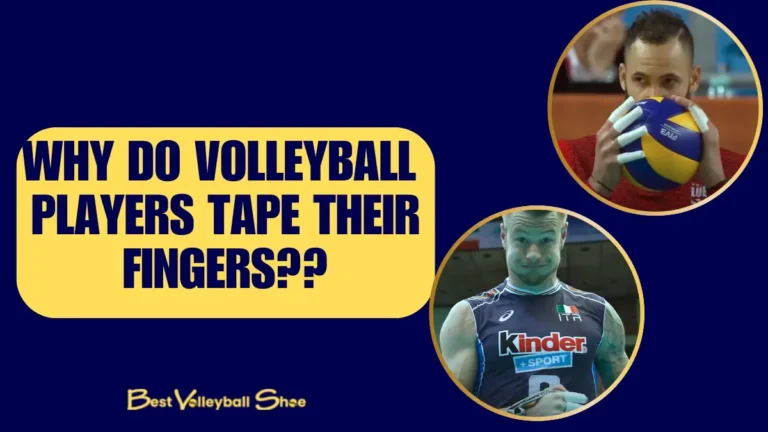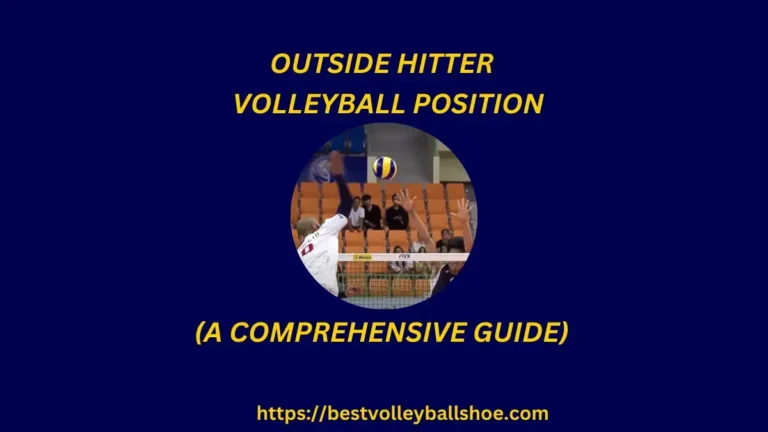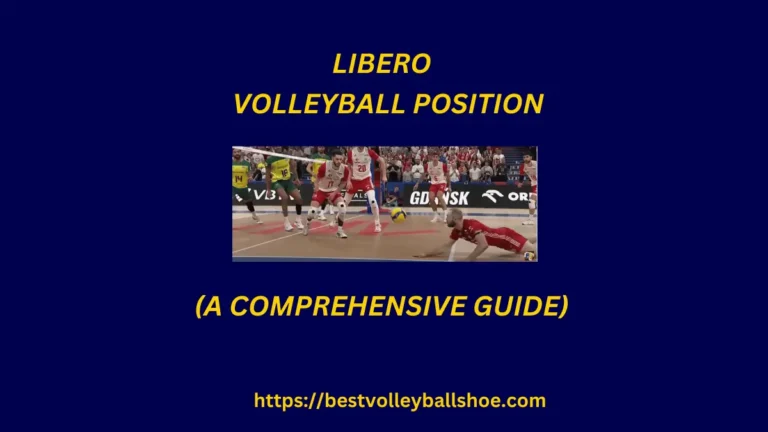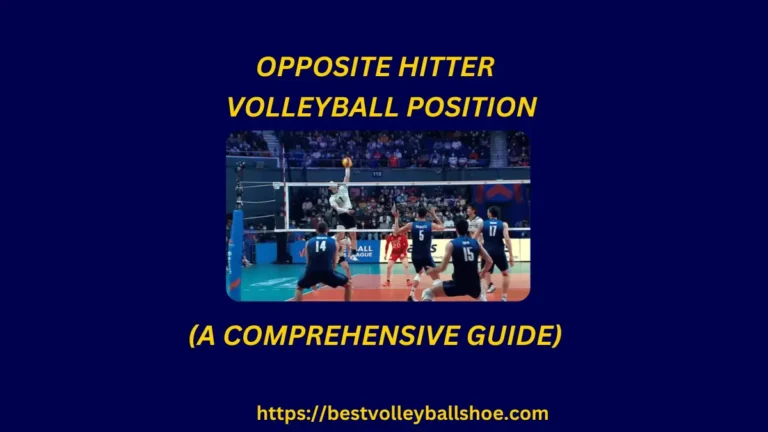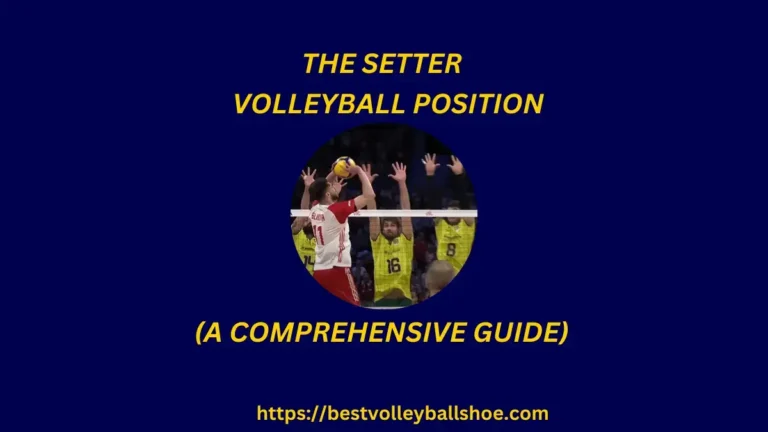Middle Blocker Volleyball Position: A Comprehensive Guide
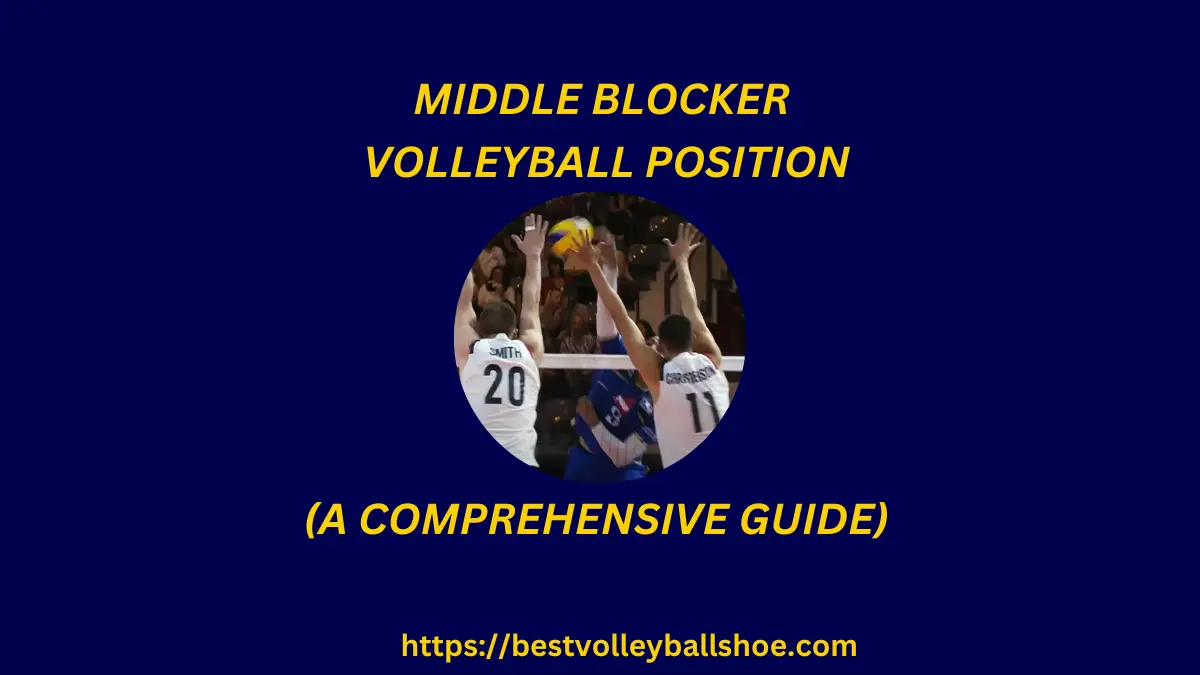
Middle blocker volleyball position normally requires the tallest volleyball player on the team. He is the primary line of defense against the hitter from the opposite team.
He also acts as a middle hitter in a volleyball team. The middle blocker plays at position 3 in the court i.e. in the front middle in the front court.
Middle Blockers are responsible for judging the movements of the opponent team’s hitters, and blocking the hit by their hand after jumping.
In addition to this, they also obtain quick points by placing the ball on the opponent’s side of the court.
In this article, we will discuss different basics of this playing position, including volleyball terms, history, volleyball rules, playing position, rotation, role, importance, qualities, physical attributes, and different volleyball equipment for this position.
Finally, we will evaluate the recruitment standards and important tips for becoming a better libero.
So let’s dive into this important volleyball position
Basic Terminologies
In the US volleyball rules following blocking terminologies are mentioned:
Blocking- It is a player action, who is standing in the front row to block the incoming ball, by jumping and reaching the top of the net, without considering the ball height.
Blocking Attempt- Blocking the action of a player (blocker) without touching the ball.
Completed Block- When the blocker touches the ball he completes a block.
Collective Block- When two or three players, closer to each other try to execute a block, and one of them completes a block.
Rules for Middle Blocker Position
Rule 14 of US Volleyball Rules, 2019-2021 devises the following rules for middle blockers:
Position & Rotation of the Middle Blocker on the Volleyball Court
Middle Blocker stands in the middle position of the front row on a volleyball court. Before receiving a serve from the opponent team, they usually stand in front of the opposing middle blocker position.
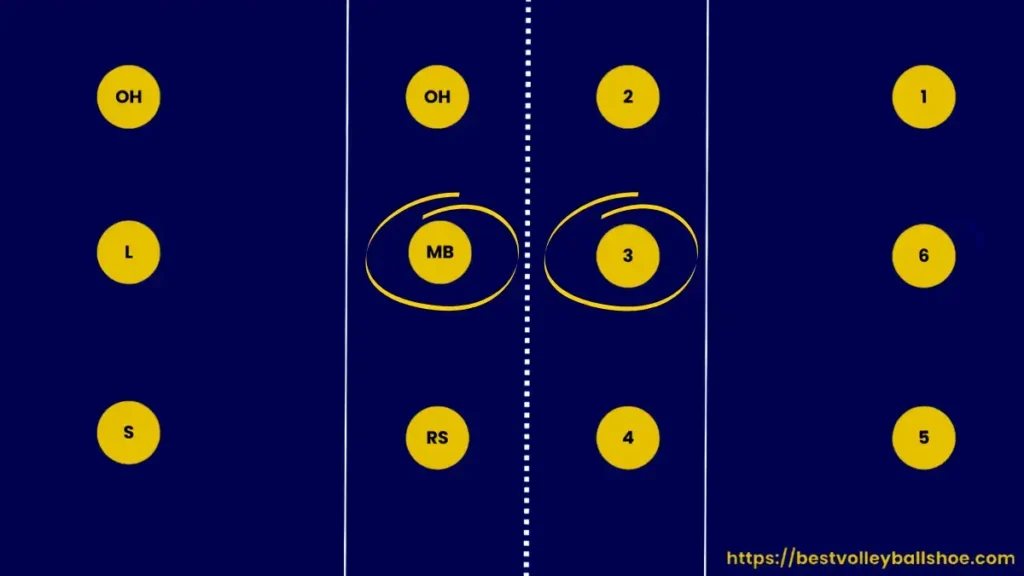
They are not allowed to cross the outside hitter (position 2) and opposite hitter (position 4). Moreover, they are also required to remain in front of their back player i.e. position 6 which can be either libero or defensive specialists
Middle Blocker in 5-1 and 4-2 Rotation
In both rotations, the middle blocker moves to the middle position of the first row.
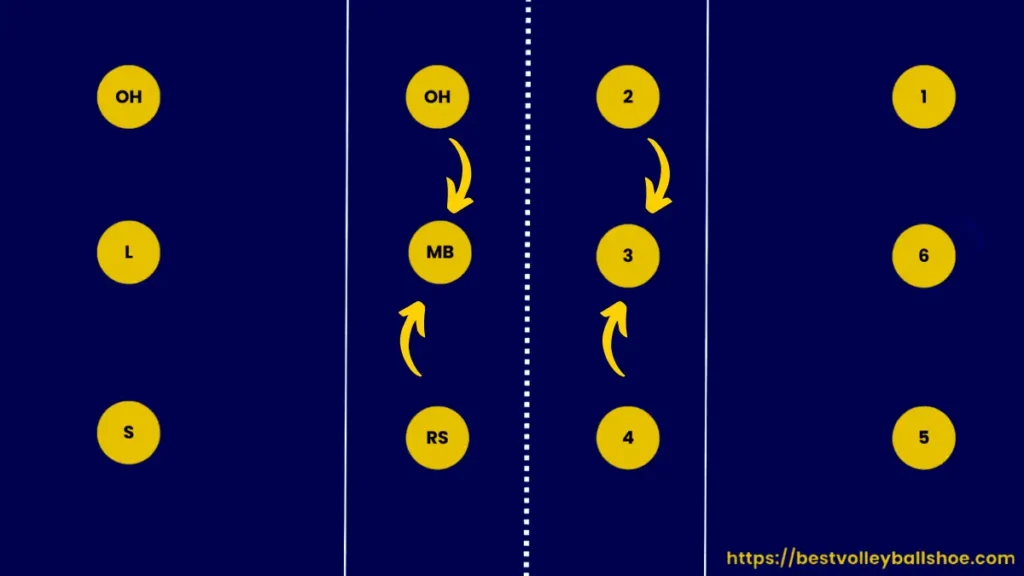
Once the team has received the serve, the middle blocker moves to the center for spiking.
Middle Blocker Rotation in Back Row
Since rotation takes place in a clockwise manner, so middle blocker moves to position 01 after position 03.
At position 01 he serves the ball, and afterward moves to position 05 or 06 and is ultimately replaced by libero. Later on, he returns to the court at position 04.
Role and Responsibilities of Middle Blocker Volleyball
Blocking: The primary job of the middle blocker is to perform defensive responsibilities by acting as a human wall at the net.
Ideally, they are supposed to block each spike and quick attack from the opponent team hitter. Although they’re also supported by the other two players in the front row, they are the specialized person with this duty.
The middle blocker position in the front row specifically facilitates him to move in both directions.
Hitting: A Middle hitter aka middle hitter is also responsible for hitting and quick attacks
Keeping an eye on Setters and Hitters: Setters and hitters are the opponent’s key players as far as point scoring is concerned. Hence, keeping a critical eye on these players is important
Serving: While playing in the backcourt they also serve the ball. A strong middle hitter makes a difference through his quality serves, spiking, and blocking
Qualities & Strengths of a Good Middle Blocker
Middle blocker is one of the tough and key positions in volleyball. So If you want to play middle blocker in the future then you have to develop and polish the following qualities and skills.
Additionally, you must be fulfilling the physical requirements of the position. Below is the brief of the requirements for this position in volleyball.
Observation: Observation is the key, as it helps him in judging the ball’s direction, height, and speed. Furthermore, if he is a keen observer he can see the evolving strategy of the opponent team.
Jumping: Jumping at a good height is a key quality of any middle blocker. The low jump of the middle blocker gives a competitive edge to the opponent hitters with excellent jumping ability.
Agility: The middle blocker should be agile and quick in moving across the net to stop the score points from opponent hitters
Judging the opponent setter and Hitter: The Middle blocker should be best at judging the opponent setter, outside hitters, and opposite hitters. Sometimes, the body movements of the setter give a clue about the setting.
For example, if he is setting to a specific position or bending in a certain direction. Thus, a middle blocker should be vigilant in determining the position and direction of the set. In this way, he can take position earlier and et benefit over the opposite hitter.
Good Blocking Techniques: As blocking is the prime responsibility of a middle blocker, he should be a master at blocking. He should be skillful at frustrating the opponent’s left-side hitter by quality blocking at the middle blocker position.
Efficient movement: The movement is very crucial while blocking a kill. A middle blocker should be skillful in filling the gap with a fellow outside blocker on the net.
He has to be in a blocking position timely and with precise footwork. A little delay or inaccuracy in the movement will result in the punishment, in the form of a kill, from the opponent spiker.
In fact, by his efficient footwork and timing, he denies the wing spiker of the opponent team to obtain a kill.
Although it is difficult to meet such an accuracy, this is the skill that makes a pro middle blocker. Interestingly, precise footwork and in-time movement is the main problem at the junior level.
Physical Attributes of a Middle Blocker
Heigh: This position requires extreme height. If you are an average-height volleyball player then I’ll suggest opting for any other playing position in volleyball with low height standards.
Arms Length: It’s all about the reach, the more the length of arms the faster you will be reaching/crossing the net height for blocking. Long arms increase the standing reach of a blocker. Normally, players having more standing reach have more efficient jumps than those with lower reach
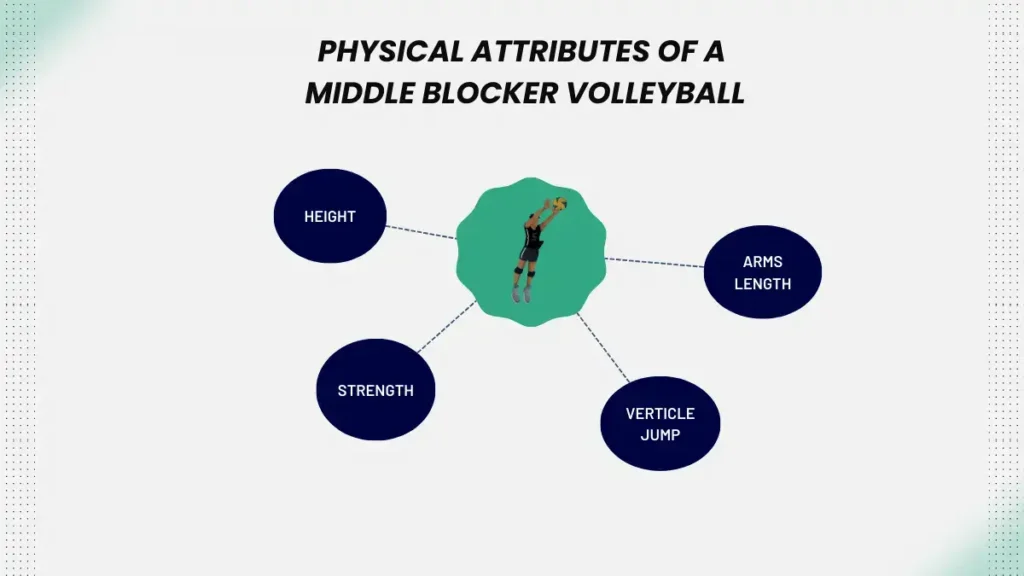
Strength: Volleyball is a game that requires strong athletes especially when you are a middle hitter and outside hitter. In addition to the defense line of the team, the middle blocker also plays as a middle hitter. Therefore, he should have strong hands to punish the ball rather than merely blocking the incoming spikes from the opponent.
I’ll mention Dmitriy Muserskiy, 218 cm tall former Russian middle hitter as an example to explain my point. He was a monster with sheer strength and used to just stand and deliver the spike.
In my opinion, he doesn’t have as excellent technique as Smith the American middle blocker. But, due to his height and strong body, he often has the edge.
Volleyball Gears for Middle Blockers
Volleyball Shoes
A decent pair of volleyball shoes is the most important gear for any player on the court. Middle blockers do a lot of jumping during blocking and hitting.
So, in my opinion, they need a shoe that has ample cushioning and springiness as well as a good heel-to-toe transition. Considering the needs and requirements of Middle Blockers, I’ll recommend Asics Sky Elite FF2.
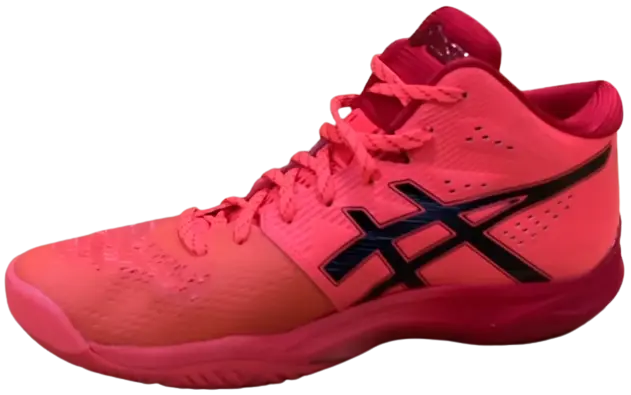
ASICS Sky Elite FF MT-2
ASICS Sky Elite offers a great mix of flexibility, comfort, breathability, and smooth heel-to-toe transition, consider these options.
You may enjoy a detailed review of my experience in using Best volleyball shoes. I’ve discussed different features as well as the pros and cons of these shoes in det
How to be a Good Middle Blocker? Pro tips.
Stand in Loaded Position
A middle blocker should stay in ready to move position in the middle of the front row. This can be achieved if you bend your knee and put an equal weight on both feet. He should not be standing straight.
The knee bending helps to move immediately and explosively. Moreover, this position seems loaded and ready to move and helps in responding to hitter hits effectively and immediately.
It is also noteworthy that when you have to jump, you take a bend first and then jump. Hence, this position will save the response time at the middle blocker position for bending and then jumping.
Stay at an appropriate distance from the Net
Appropriate distance is very important for effective blocking. For instance, if you’re staying too close to the net, there will be difficulty in penetration above the net into the hitter’s window.
Conversely, if you’re standing too far, then there is the likelihood of the ball dropping toward your side after the completed block.
So ideally, a middle blocker should stand 1- 2 Feet away from the net, depending on the one’s efficiency with different distances. In other words, an arm or a half distance to the net is an ideal staying position for a middle blocker.
Keep an eye on the opponent hitters and setter
As setter is the key player in the offense. So, it is pertinent to keep constant surveillance on him in addition to outside hitters and other row hitters.
If the setter receives a speedy and lower pass then there is the likelihood of a dump. On the other hand, if he is in the middle and receives a pass then he will set it for the either opposite or outside hitter.
Few setters also have good chemistry with some specific hitters, or sometimes they set more for the hottest outside hitter in the match. Moreover, in some instances, the setter’s body gives a clue about the direction of the set.
In short, if you are a Middle blocker, the setter’s movements and actions can prove helpful in defense.
Block the hot hitter of the opponent team
In my opinion, it is also important to block the prime and in-form outside hitter of the opponent team to get a physiological upper hand.
It will give you confidence and upper hand on the opponent. Additionally, it will also create a pressure situation for the opponent team setter and compel him to look for options.
Jumping Height
While Standing closer to the outside blocker, it is imperative to get over the net than to reach high above it. In some instances, normal heightened setters are more effective in blocking the taller opposing team’s hitters.
The reason for this is a spike of the row hitters closer to the net while terminating the kill. Thus, getting over the net provides a good opportunity for blocking the ball easily.
Correct Position of Hands and Arms
Being a middle blocker, your prime objective is to act as a wall using your hands, against hits by the opponent team’s middle or outside hitter.
If you wanna be a better middle blocker your hand and arms should be in the right position. For blocking, simply jump and raise your hands straight and lock your shoulders.
Importantly, your hands should bend toward each other at a 45-degree angle from the wrist. Furthermore, the distance between the finger and thumbs should be equal to both shoulders and in a straight line to the shoulder and the
Communication is the Key
Having a good conversation with back-row players will give you valuable information about the opponent’s attack. There is a possibility that you are missing any aspect which is on the notice of another player.
Similarly, you can also share your observations regarding their assignment. This will help in improving the confidence of every player. Moreover, this will also give a team spirit.
Maintain your composure after scoring a point
If you have successfully made a block, then neither lose your temper nor scream at the opponent hitter’s face. There is nothing wrong in celebrating your success, at the same time it is equally important to be respectful to the opponent.
In my opinion, the better way is to acknowledge your fellow blocker first and then celebrate with other players.
Key Performance Indicators (KPIs) for a Middle Blocker
The coaches and analysts may use the following key performance indicators (KPIs) to gauge the performance of middle blockers in a volleyball team whether it’s at pro, college, or club volleyball level.
Blocks
Blocks are one of the most important KPIs for middle blockers, as this is their primary responsibility on the court. Coaches may track the number of blocks per set or per game to measure a middle blocker’s effectiveness at the net.
Kill percentage
Although blocking is the primary responsibility of a middle blocker, they also need to be a master hitter. Kill percentage measures the percentage of successful hits that result in a point for the team.
Serve reception and digging
Middle blockers may also be called upon to dig out the opposing team’s attacks, especially if the ball gets past the back-row defenders. Coaches may track the number of digs a middle blocker makes per set or per game to measure their defensive effectiveness
Errors
Coaches may also track the number of errors a middle blocker makes, such as hitting errors or blocking errors. Minimizing errors is important for any player, but it’s especially important for middle blockers, as their mistakes can result in points for the opposing team.
Challenges for a Middle Blocker
Every sport has a few challenges which may vary in intensity with different positions, and so is volleyball. For instance, a football goalkeeper faces different challenges than the forward or the center.
Similarly, if you are playing volleyball the problems and challenges also vary according to the situation. A middle blocker may face various challenges. I have shortlisted some of them as under.
Injuries
Volleyball is a speedy game and an adequate number of jumping is involved in it. The landing after the vertical jump puts significant pressure on joints, especially knees, and feet.
According to a study published in the Journal of Human Sports and Exercise middle blockers and outside hitters were more vulnerable to injuries.
It is pertinent to mention here that 73% of these injuries were related to front-row volleyball players. Unfortunately, 24% of these injuries happened while blocking.
By recognizing these challenges and working to overcome them, middle blockers can become more effective players and help their team succeed on the volleyball co
Physical Fitness
Like every position in volleyball, middle blockers need to be in good physical shape to give their 100% on the volleyball court. They need to have good endurance, strength, and agility to meet the game requirements.
Taller Opponents
Middle blockers may face taller opponents in the opposing team, which can make it more difficult to block their attacks in the first line. Russian middle blockers and hitters, due to their height can be regarded as an example.
In these cases, middle blockers have to rely on their professional skills quickness, and agility to make up for the opponent’s height disadvantage.
Consistency
Middle blockers need to be consistent in their blocking and hitting abilities throughout the game. This can be challenging, as they may become fatigued over the course of a match.
Frequently Asked Questions
Do Middle Blockers serve?
Yes! Middle blockers also serve. In volleyball, all positions except libero are to serve.
Do Middle Blockers spike?
Middle blockers are also called middle hitters. They can spike while standing in the first row. However, while on defense as a back-row player, they are not allowed to attack.
How many Middle Blockers are in a volleyball team?
Depending on the formation there are one or max two middle blockers in the volleyball team
Who is the best middle blocker in the world?
Svetoslav Gotsev is the top middle blocker in the world.
Is Middle Blocker and Libero the same?
Middle blocker and the libero are two different volleyball positions with one similarity i.e. defense role in the back row.
The base position of the middle blocker is middle of the front row, whereas the libero is playing middle of the back row.
Middle blocker is also a hitter whereas Libero is only a back-row defense specialist. Libero does not play in the first rows, on the other hand, the middle plays both in the front and the back row.
Can a middle blocker pass?
Primarily, the middle blocker has to block the ball and that is also not counted as a touch. However, after the block, if the ball is on his side of the court, he will pass the ball back
Where is the middle blocker position in volleyball?
The middle blocker plays in the middle of the first row at the no.03 position in the volleyball court. They are responsible for blocking the opponent’s spikes and attacking the ball from the opponent’s team.
What can a middle blocker do in volleyball?
The middle blocker position can block and hit the ball. They also serve while playing in the back row.
Is middle blocker a good volleyball position?
It all depends upon any volleyball player and his likes and dislikes as well as his skill set. Moreover, every position in volleyball has few skills and physical demands. If you’re strong, heightened, and can maintain the quick tempo then definitely middle is a good option.
